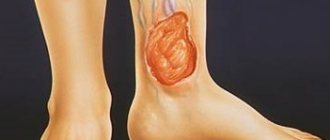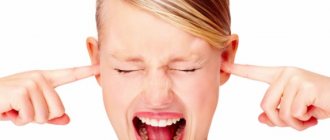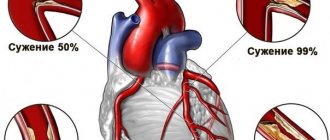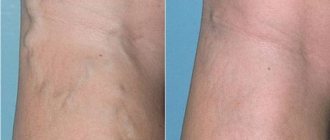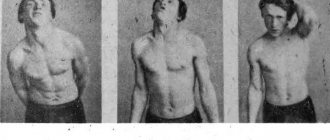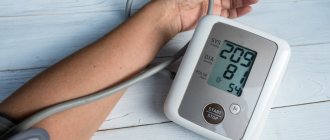You have come for important information and now we will talk about the attack of VSD and the causes of its occurrence, methods of treating vegetative crisis. Maybe in your case it was different, but we’ll tell you how it usually happens. Attention, before prescribing diagnoses or medications/treatment for yourself, you should always consult with professional specialists in your field and not self-medicate. Of course, you can quickly find the answer to the simplest questions and diagnose yourself at home. Write your wishes in the comments, together we will improve and supplement the quality of the material provided.
Varieties
In total, there are three types of VSD attacks. Depending on the type, the number of relapses varies, as well as the severity of the condition. They also depend on the disorder of one or another part of the nervous system - sympathetic, parasympathetic. Each of them corresponds to a specific type. In total there are:
Also, attacks of vegetative-vascular dystonia are divided depending on the duration of the attack. They come in light, medium and heavy. Lungs appear no longer than 15 minutes and are often accompanied by disorders of one system (for example, in the form of rapid heartbeat or asthma attacks).
The average ones last up to an hour, and after them a post-crisis state is observed, which lasts up to several days. Severe autonomic attacks are characterized by disorders of many systems simultaneously (for example, tachycardia, fear, headache, increased salivation, nausea). The duration reaches several hours, after which the unpleasant sensations may continue for the next two days.
Treatment
Crises are manifested by disorders of several organs and systems at once, so the choice of drugs depends on the symptoms and severity of the panic attack. Since they are most often associated with emotional disorders, neurological symptoms are treated by neurologists and psychologists. Psychotherapy sessions are indicated for people with psychological trauma, stress after a crisis, family problems, etc.
In neurology, drug therapy consists of prescribing antidepressants:
- Clomipramine.
- Maprotiline.
- Tianeptine.
- Cipramil.
- Paroxetine.
- Fluoxetine.
- Clonazepam.
- Alprazolam
- Lorazepam.
- Diazepam, etc.
Drugs are selected depending on the causative factor, taking into account the psychological characteristics of a person, and the symptoms of a vegetative crisis. Taking the drugs lasts on average 6 months. Symptomatic therapy is aimed at reducing the severity of symptoms from a specific organ or system.
Attack of VSD or vegetative crisis
Attacks of vegetative-vascular dystonia occur suddenly and are accompanied by unpleasant symptoms that are provoked by disorders in the autonomic nervous system.
With frequent attacks of VSD, a person’s level of performance decreases, attention and memory deteriorate. With intense manifestations, a deterioration in mental health is observed - he becomes depressed.
VSD is not a disease, but a set of symptoms that may indicate different diseases. Diagnosis depends on the type of accompanying symptoms. In the International Classification, a vegetative crisis is classified as a panic attack.
The first manifestations of the crisis are observed at about 20 years of age. But it happens that this happens at a younger age. Women are almost 3 times more likely to suffer from this symptom complex.
The manifestations of this disorder are not always pronounced. In most cases, the manifestations are blurred or insignificant. The trigger for the syndrome to enter the active phase is severe stress, hormonal imbalance, and intense physical activity.
Do you trust doctors and their prescriptions?
Yes
20.4%
No
11.94%
I trust, but I check all medications for reviews on the Internet from people who have already tried them and only then do I start taking them.
50.25%
Yes, but only to appointments and doctors from paid clinics.
17.41%
Voted: 201
The most striking are the first manifestations of a crisis, and therefore are remembered for a lifetime.
Treatment of vegetative crisis and prognosis
How to cope with panic attacks? Treatment in this case should be comprehensive and include not only drug therapy. Based on the patient’s complaints, the doctor determines the duration of the crises, the severity of the symptoms, and only then prescribes medications. In addition, the patient will need to learn how to cope with panic attacks on their own.
Drug therapy
Treatment with medications in the event of a vegetative crisis is symptomatic. To stop an attack, several different medications may be required:
- in case of cardiac dysfunction, you will need to take Valocordin, Corvalol or Anaprilin;
- Relanium or Clonozepam will help relieve an attack of fear or anxiety;
- You will also need a course of antidepressants strictly under the supervision of a doctor.
In addition, treatment of somatic diseases and abnormalities in the functioning of the nervous system identified during the examination will be required. All of the above measures can also be used to relieve an attack of a vegetative crisis.
Non-drug therapy
A person suffering from autonomic disorders of this type needs to know how to recognize the oncoming signs and how to cope with an attack on their own. Breathing exercises help to cope with the problem. Proper deep and slow breathing saturates the body with oxygen, which helps reduce the severity of symptoms that occur during attacks. Saturating the body with carbon dioxide is no less effective. To do this, use a regular paper bag into which air is exhaled and then inhaled.
If the patient anticipates the onset of a panic attack, at this moment the environment should be changed. Get out of the room, out of the vehicle, into the street, try to distract yourself by paying attention to the objects around you.
Forecast
Analyzing patient reviews and the results of their treatment, doctors found that in many cases, proper treatment can eliminate the likelihood of panic attacks. However, therapy should be started at the very initial stage of the disease. A course of medication, the help of family and friends, as well as the patient’s great desire to be cured, will help to cope with such problems much faster.
How to cope with an attack?
Depending on what form of crisis is being dealt with, its elimination will occur in different ways. An attack of VSD can occur both during the day and at night. Patients perceive nighttime manifestations worse, as they seem more pronounced.
If we are talking about a mild form, you can cope with it at home. To do this, you should initially accept the idea that the symptoms being shown are not fatal and can be influenced.
To eliminate unpleasant manifestations, just take a walk in the fresh air, drink herbal tea, and lie down.
If this is a crisis of moderate or severe form. You can't do this without taking medications. But for this you need to seek help from specialists. After additional diagnostics, a diagnosis is established and treatment is prescribed. The most commonly prescribed drugs are tranquilizers and antidepressants.
People suffering from a constant vegetative crisis anticipate the onset of the next attack. If possible, it is worth distracting yourself with something, sometimes it really helps. But if an attack cannot be avoided, in order to alleviate the condition, you should follow some recommendations:
- unfasten the top buttons of clothes to allow fresh air to enter, if possible, open a window;
- sit on a chair, or better yet, lie down if this is an acute form of crisis, raise your legs high for blood flow to the head;
- drink a sedative;
- calm down, wait until the attack passes.
What should you not do during an attack?
If a person finds such manifestations in himself, in order to alleviate his condition, he needs to give up some actions that will only aggravate the condition.
Speaking about the disorder as a whole, it is worth considering that those suffering from VSD need to exclude:
- alcohol abuse;
- smoking;
- use of any psychoactive substances;
- drinking coffee and caffeinated drinks;
- heavy physical exercise;
- reduce stressful situations
If we are talking about another attack, during it it is not recommended to take pills that were not prescribed by a doctor or continue physical activity. Otherwise, an attack of VSD does not require additional action.
If a person does not know anything about the disorder, it is more difficult for him to cope with the manifestations. The fear intensifies and this only intensifies the symptoms. To avoid this, it is worth learning more about the crisis, as well as how to deal with it.
- darkening of the eyes;
- speech disorder;
- lack of concentration;
- feeling of derealization, depersonalization;
- tachycardia;
- headache;
- dizziness;
- lethargy;
- increased level of sweating;
- suffocation;
- feeling of unreasonable fear;
- increased anxiety;
- sleep problems;
- increased salivation;
- involuntary urination;
- irritable bowel syndrome.
- numbness of arms and legs.
Drug therapy
Since the main cause is due to dysfunction of the autonomic nervous system, it is necessary to influence it first. Treatment involves the use of:
- Vascular drugs (Trental, Cavinton). They improve metabolism in the brain, normalize microcirculation, and stabilize the functioning of the sympathetic and parasympathetic sections of the ANS.
- Sedatives (Novo-Passit, Persen Forte). They quickly reduce anxiety attacks and calm you down.
- Antidepressants , which improve the patient’s mood and the functioning of the ANS.
In addition to basic drugs, symptomatic ones are used:
- Tachycardia and interruptions in heart function are treated with beta blockers (Anaprilin, Enalapril, Bisoprolol).
- Fluctuations in blood pressure are corrected with the help of ACE inhibitors, calcium channel blockers and other groups of drugs.
Drug treatment is prescribed only by a doctor. Self-administration of tablets leads to the development of serious side effects with worsening clinical manifestations.
Development mechanism
A sudden worsening of the condition of a person suffering from VSD occurs against the background of a sharp overload of the autonomic centers. This phenomenon is accompanied by increased impulses in the autonomic nervous system (ANS) with the progression of symptoms.
The sympathetic and parasympathetic departments are involved in the process. Depending on the predominance of one of them, the clinical picture will differ in the future. An increase in signal transmission from the brain to the periphery and back is accompanied by the following changes in the body:
- sharp narrowing or dilatation of blood vessels;
- fluctuations in blood pressure (BP);
- change in the activity of heart contractions (tachy- or bradycardia);
- improper functioning of the sweat glands (hyperhidrosis, dyshidrosis or lack of sweat - anhidrosis);
- emotional lability;
- respiratory disorders.
Symptoms of an incipient vegetative crisis
A crisis can give rise to the following conditions:
- stress or neurotic disorders: the easiest to treat;
- consequences of hereditary injuries, concussions, residual disorders of the main nervous system;
- constant irritation of peripheral vegetative structures;
- endocrine changes in the body (for example, during sexual maturation), pathologies of the working process of the endocrine glands;
- taking medications (for example, Erespal).
Symptoms
The clinical picture of the disease directly depends on the predominance of one or another part of the autonomic nervous system.
In case of sympathoadrenal vegetative-vascular crisis, symptoms may be as follows:
- emotional lability with an emphasis on aggressiveness, anxiety - a person breaks down at the slightest outside irritation;
- increased heart rate (tachycardia);
- increased blood pressure;
- severe, throbbing, sudden headache localized in the temporal, occipital or frontal region of the skull;
- pain in the heart of a different nature (stabbing, pressing, burning, cutting) - mostly without irradiation to other parts of the body.
A person with this form of panic attack is extremely worried, he cannot find a place for himself, and may start crying or screaming. The face turns purple, sweating increases, and the eyes protrude (not always). Any additional irritant aggravates the clinical picture.
Vagoinsular crisis is a kind of antagonist and the opposite of the panic attack described above. It occurs against the background of hyperactivity of the parasympathetic division of the ANS. Typical symptoms:
- depression, worsening mood, tearfulness, sometimes suicidal thoughts occur;
- disruption of the heart - characterized by interruptions with a feeling of lack of air, compression in the chest or bradycardia;
- blood pressure is predominantly reduced, against this background there is severe dizziness and loss of consciousness;
- the pain syndrome is of an uncertain nature, most often the pain is localized in the head, but can migrate throughout the body.
Patients with a similar form of panic attack with cold sweat on their hands and face. Sometimes there is tremor of the hands and instability of gait. To maintain consciousness, a person needs to sit down and breathe in several times. The longer such crises last, the worse the patient feels.
Types of crises
The course of panic attacks that develop against the background of autonomic dysfunction can vary greatly. It all depends on the predominance of one or another part of the ANS, which is activated at a particular moment.
Traditionally, there are 3 types of vegetative-vascular crises:
Depending on the severity and duration, the following types of crises are distinguished:
- Easy . Symptoms are mild. The average duration of a panic attack is 5–15 minutes.
- Average . Manifestations of a crisis are more serious. The duration of the panic attack increases, but does not exceed one hour.
- Heavy . The clinical picture reaches its peak. Possible loss of consciousness. The panic attack lasts more than an hour. Recovery may take up to 7 days.
In addition to basic drugs, symptomatic ones are used:
Classification
Vegetative crisis does not have a single classification. It is usually divided into types, which have varying degrees of severity and symptoms, which in turn are related to blood pressure readings and the functioning of the cardiovascular system.
Vegetative crisis is divided into several types with varying degrees of severity. The lung is characterized by short attacks of 10-15 minutes, with pronounced disorders of the autonomic system and manifestations of a monosymptomatic nature, with no post-crisis asthenia. Attacks of moderate severity can last from 15-20 minutes to an hour, while there are polysymptomatic manifestations and post-crisis asthenia, which last for 24-36 hours. During a severe attack, a combination of polysymptomatic crises is observed along with convulsions and hyperkinesis; this condition lasts more than one hour and is accompanied by multi-day asthenia.
Based on symptoms, vegetative crisis is divided into: vagoinsular, sympathoadrenal and mixed.
Vascular crisis symptoms
During a vascular crisis, there is a sharp change in the filling of blood vessels, which causes disturbances in the peripheral and central circulation. A vascular crisis manifests itself in the form of an attack or attack. In addition, depending on the area of distribution of hemodynamic disorders, vascular crises of regional and systemic damage are distinguished. Regional crises include angioedema, angiotrophoneurosis, migraine, which arise as a result of impaired blood supply to tissues and organs. Systemic are hypotonic, vegetative and hypertensive crises.
Symptoms of vascular crisis are characterized by a variety of clinical manifestations. For example, during a cerebral attack, the pain in the head suddenly intensifies, and the ears begin to ring. Then the patient may feel dizzy with nausea and vomiting, and spots flashing before the eyes. The person loses coordination and his blood pressure rises. In some cases, sensitivity is impaired with transient paralysis of the limbs. It is extremely rare to observe that the patient is completely unoriented in time and space, he is constantly in a drowsy state. In addition, convulsions may occur, memory may be impaired, and both the psyche and motor skills may be excited.
The clinical manifestations of migraine are a dull pain in the head, pressing in nature, the appearance of nausea and weakness. Pain in the head may also occur in the form of pulsations in any half of it. Migraine, as a rule, occurs in three stages, differing in the nature of the headaches.
The symptomatic picture of vascular crises of the autonomic system consists of their subtypes. For example, with sympathetic-adrenal types, patients are observed to have a strong excited state, they begin to shiver, they are restless and anxious. A feeling of a panic attack appears, the limbs become cold, heart rate and blood pressure increase, and in the area of the head and heart, patients experience rather unpleasant sensations. During hyperventilation attacks, patients suddenly begin to lack air, difficulty breathing, tachycardia quickly develop, blood pressure rises, and the patient sweats profusely. In addition, the muscles in the forearms, hands, feet and legs become tense.
Symptoms of the vagoinsular type of vascular crisis are characterized by a sinking heart, lack of air in the lungs, dizziness, nausea and weakness. As the vascular crisis progresses, blood pressure drops sharply, the patient sweats profusely and intestinal motility increases. As a result, vomiting appears, but it does not relieve the patient.
With the vegetative-vestibular type, the patient experiences nausea, vomiting, dizziness, and blood pressure drops if the patient changes the position of his body.
Vestibular crisis
Vestibular crisis, similar to cerebral, including symptoms. During an attack, the human body experiences a difficult state, since various substances can be released into the blood: norepinephrine, steroid hormones, acetylcholine, adrenaline and other highly active compounds. When there is a sharp surge of one or another substance in the body, the condition worsens sharply.
Factors predisposing the development of a crisis:
- Labyrinthitis;
- Hypertonic disease;
- Hemodynamic disturbances;
- Atherosclerosis;
- Pathologies of the central nervous system;
- Pathologies of the peripheral nervous system;
- Pathologies of receptors of the blood vessel apparatus.
Symptoms appear very quickly and unexpectedly. Among them are:
- Vomit;
- Noise in ears;
- Severe dizziness;
- Severe nausea;
- Impaired muscle tone;
- Discoordination of movements;
- Unsteady gait;
- Disorientation in space.
A vegetative-vascular crisis of any type requires treatment, and the sooner you take care of your health, the faster you will return to your previous state. You can read more about what needs to be done and in the articles on our website. The main thing is to know what a crisis is, because during the next attack you will not be afraid of dying or losing control of yourself.
Providing first aid in a crisis
The main rule is not to panic, calm down. The attacks are often accompanied by difficulty breathing. You need to control your breathing rate
Try to focus on the good. In case of an acute attack, drop heart drops (20-25) into water and drink
For tachycardia, take Anipril tablet. If you are nervous, put 2 Diazepam tablets under your tongue. High blood pressure is treated with medications to lower it.
At the first signs of loss of consciousness, nausea, dizziness, and weakness appear. The patient becomes very pale. In this case, you need to unfasten the top buttons and straps. Get rid of everything that is squeezing. Allow free flow of fresh air. Place the patient in a horizontal position. Raise your legs higher than your torso and head to ensure blood flow to the brain. Rub your feet. Place a damp towel on your forehead.
If the attack happened on the street, the patient should be seated so that his back rests on an object. Sprinkle your face with cool water. This state lasts up to 4-5 minutes. Later, you need to give the person warm, sweet coffee or tea. You can add a few drops of valerian.
Manifestation of crisis
With the development of a vegetative crisis, there is a rapid release of the adrenal hormone adrenaline into the bloodstream, resulting in the following symptoms:
- A sharp jump in blood pressure;
- Increasing anxiety and fear of death;
- Headache;
- Tremor of the limbs;
- Feeling of cold followed by heat;
- Feeling of lack of air;
- Increased sweating;
- Compression and discomfort in the left sternum;
- Dizziness and severe weakness, reminiscent of fainting.
The so-called vegetative storm develops rapidly and unexpectedly for the patient. It can manifest itself as individual symptoms or a full list of characteristic signs within 10-15 minutes and end with emptying the bladder and bowels, and vomiting.
Complications and prognosis
In the majority of cases, an involuntary attack is not limited to one moment; for this reason, the patient creates a stable expectation of a subsequent crisis, creating a restless situation. Patients with crisis experience the following difficulties:
- Phobias – a person seeks to avoid these places and situations that may cause an attack.
- Depression - prolonged anticipation of a new attack negatively affects a single psycho-emotional background.
- Increased fatigue and decreased social activity are also considered complications of panic attacks.
The prognosis of the disease is positive if the patient does not delay the visit to the doctor, undergoes a multifaceted examination and receives additional support from a psychotherapist.
Significant difficulties in the differential diagnosis of an autonomic crisis with thyrotoxic and hypertensive crises usually do not arise, since in thyrotoxicosis autonomic dysfunction is more persistent and is usually accompanied by other manifestations of the disease; in the second case, it should be taken into account that severe arterial hypertension is not characteristic of vegetative crises (although sometimes, especially during the first crises, a significant increase in blood pressure is noted).
Spasms of blood vessels and muscles during vegetative-vascular dystonia are a fairly common phenomenon. The disease is characterized by impaired vascular tone, which is caused by disruptions in the functioning of the autonomic nervous system. Spasms can lead to serious complications for the entire body, so when they appear, it is important to contact a medical facility.
Diagnostics
Diagnosing a panic attack is quite difficult. Even an experienced doctor, observing an attack, cannot always say what condition is developing in the patient. To confirm this, you will need to conduct a diverse examination, including a medical examination, checking reflexes, an electrocardiogram, measuring pulse, blood pressure and much more. Only after receiving the results can a person be suspected of having a vegetative crisis. A diagnosis can be accurately established only after the attack has ended, excluding the following diseases and conditions:
- abnormalities in the functioning of the heart - daily cardiac monitoring, ECG under stress, and ultrasound of the heart may be required;
- stroke, brain tumors - computed or magnetic resonance imaging is performed;
- vascular crisis (migraine) – encephalography, computed tomography;
- bronchial asthma - breath tests and skin tests are performed to detect an allergic reaction;
- internal bleeding – ultrasound of the abdominal cavity and pelvic organs is required;
- hypertensive vegetative crisis - computed tomography or MRI;
- mental disorders - examination by a psychotherapist.
After excluding the listed diseases, a diagnosis of vegetative-vascular crisis is made if it is established that the peak of the attack occurs 10 minutes from its onset and the condition is accompanied by strong emotions in the form of anxiety or deep-seated fear. The diagnosis can be established in the case of nonspecific panic attacks, accompanied by visual impairment, hearing impairment, convulsions, and movement disorders. If panic develops only once, this condition is not considered a sign of illness.
Sometimes panic attacks are diagnosed in children. They can be triggered by various psychological traumas or stressful situations. Most often, crises in a child occur against the background of family quarrels.
Important: Family problems can forever leave a mark on the child’s psyche.
An attack of VSD - what does it look like?
The clinical picture of dystonia during a crisis varies depending on the system affected at a particular moment. And since the autonomic nervous system is responsible for the functioning of the heart, regulation of body temperature, frequency and rhythm of breathing, and normalization of blood pressure, the symptoms of an attack manifest themselves in different ways. These can be sudden onset:
- disruptions in the functioning of the heart. Heartbeat becomes faster or slower;
- panic attack;
- asthma-like shortness of breath and increased breathing;
- dizziness and weakness;
- convulsions;
- loss of consciousness;
- blood pressure surges;
- increased sweating;
- decreased body temperature and chills.
modern medicine has more than 100 possible signs of the development of an attack of VSD.
How long does an attack last?
The mechanism of occurrence of the VSD crisis is associated with an increase in the concentration in the body of such biologically active substances as acetylcholine, adrenaline, and steroid hormones. Depending on which substance is greater, crises are divided into the following types:
- sympatho-adrenal;
- hyperventilation;
- vagoinsular;
- vegetative-vestibular.
The duration of an attack during a VSD crisis varies. In mild cases, the crisis lasts from several minutes to an hour, in moderate cases - 3-4 hours, in severe cases - 5-7 hours. Sometimes the crisis lasts for several days.
Types of attacks
There are three main types of attacks of vegetative-vascular dystonia:
- Vegetoinsular. It is characterized by unpleasant sensations in the head and heart, low blood pressure, and pre-fainting. The main danger is the possibility of suffocation. Very often occurs after drinking alcohol.
- Sympatho-adrenal. Discomfort in the heart, hypertension, very often a person has a headache, dilated pupils, a feeling of numbness appears, due to rapid heartbeat, severe shortness of breath may appear, and body temperature rises.
- Mixed. It can be diagnosed due to tremors of the limbs and pronounced redness of the skin. It also shows signs of the two types listed above. Sometimes it can be extremely difficult to recognize.
Depending on the type, the measures that need to be taken may vary.
, the patient will be explained in detail by a neurologist, psychotherapist and psychologist. With this disorder, it is precisely this trio that can provide the most effective help. The treatment regimen involves the use of medications (nootropics, vascular drugs, antidepressants). Doctors also recommend using general restorative methods - massages, acupuncture, special showers, baths.
Diagnosis of vegetative-vascular dystonia
VSD is difficult to diagnose, since its symptoms are diverse and in many aspects even subjective. Complex instrumental diagnostics of VSD (ultrasound, ECG, etc.) are usually used not to confirm vegetative-vascular dystonia itself, but to exclude the possibility that the patient has other diseases.
In addition, if there are any symptoms of VSD, consultations with a cardiologist, neurologist and endocrinologist are recommended, since the symptoms of autonomic disorders and diseases of the cardiovascular, nervous and endocrine systems are largely similar. Depending on the patient’s complaints, he may also need to be examined by a gastroenterologist, ophthalmologist, otolaryngologist, urologist, gynecologist, psychiatrist and other specialists.
To diagnose vegetative vascular dystonia itself, an assessment of autonomic tone is used - the level of function of a particular organ at rest (in the case indicated in the example, the heart).
If the final number is positive, we can talk about a more developed sympathetic influence on the heart; a negative result may mean parasympathetic disorders. Ideally, the Kerdo index should be equal to zero - this indicates that the subject has no autonomic disorders.
There is another simple way to diagnose VSD. The patient is asked questions that require only a positive or negative answer (for example, “Are you sensitive to weather conditions?”) Depending on the answers, the respondent is awarded points, and if their sum exceeds a certain number, we can talk about the patient having vegetative-vascular dystonia.
General symptoms
- Strong pulsation and trembling in the body, the heart beats very quickly;
- Fear of suffocation, lack of air, shallow breathing, intermittent, rapid breathing. A person tries to swallow air rather than breathe it;
- Feeling of goosebumps on the face, body, arms and legs;
- Trembling limbs, excessive sweating and chills;
- The eyes become dark, weakness, dizziness, tinnitus are felt;
- Convulsive twitching of the limbs of the body;
- Unpleasant sensations in the chest;
- A person becomes irritable for any reason, since various fears do not give him emotional peace and is constantly in psychological tension;
- There may be pain in the stomach, it constantly growls;
- The occurrence of a migraine or just a severe headache;
- Feeling nauseous in an uncomfortable situation for the patient.
In this section it is also worth briefly touching on the topic of types of crises. Among other things, modern medicine distinguishes four main types:
- Sympathetic-adrenal. Sympatho-adrenal crisis and its symptoms are observed in cases where the sympathetic department of the nervous system becomes the leading one in the patient. In this case, severe anxiety occurs, unpleasant sensations in the heart area, an excessive feeling of anxiety appears, blood pressure rises, legs and arms get cold, a rapid pulse appears, and dizziness;
- Hyperventilation. It begins with an increase in breathing rate and a feeling that there is not enough air. As a result, the body loses a large amount of carbon dioxide, which leads to high blood pressure, dizziness, and muscle tension. Feet and hands become cold to the touch or wet;
- Vagoinsular. This type of crisis is observed in cases where it predominates over the sympathetic one. As a result, the attacks begin with the fact that the heart seems to freeze, weakness, lack of air, dizziness, and nausea appear. As a result, blood pressure decreases, the pulse becomes less frequent, intestinal motility and sweating increase. To return to a normal state, the patient most often requires a horizontal position of the body, and vomiting sometimes may not bring relief;
- Vegetative-vestibular. This vegetative crisis occurs most often due to a sudden change in body position or sudden turns of the head. The main symptoms are vomiting, nausea, dizziness.
Prevention
You can avoid panic attacks by following a healthy lifestyle. Regular moderate physical activity is required. Swimming, running, yoga, long walks in the fresh air are beneficial
Treatment of vegetative-vascular dystonia in adults and children
Spinal deformities, degenerative changes in the discs, inflammatory and spastic processes can give rise to a variety of symptoms that can be combined into the following syndromes:
Another manifestation of vertebral dorsopathy is vegetative-vascular dystonia (VSD).
VSD is based on autonomic cardiovascular disorders, endocrine, degenerative diseases and injuries
Symptoms and treatment of vegetative-vascular dystonia
VSD is associated with impaired functions of the autonomic nervous system (ANS) - that autonomous department that regulates the activity of internal organs and their equilibrium state (homeostasis), which is not subject to the control of human consciousness and will
And these functions are very diverse and vitally important. This:
- Maintain normal body temperature and blood pressure
- Processes of cardiovascular activity
- Digestion and urination
- Activities of the endocrine and immune systems
VSD is not a separate disease, but a symptom complex that accompanies many diseases.
Causes of VSD
Polyetiology identifies the following main causes and factors of VSD:
- Autonomic cardiovascular dysfunctions
- Endocrine diseases (thyroid, pancreas, adrenal glands)
- Central nervous system diseases
- Traumatic brain injuries
- Degenerative diseases of the spine (priority for cervical osteochondrosis)
- Vertebral subluxations
- Brain tumors, stroke, arachnoiditis, impaired cerebral circulation
- Focal infections
- Hereditary pathologies
- Psycho-emotional stress and stress
Behavioral factors and lifestyle can contribute to vegetative dystonia:
- Excessive addiction to alcohol and coffee
- Great mental or physical stress
- The type of temperament and character traits also plays a role: The most balanced sanguine people by type are least susceptible to VSD
- On the contrary, choleric and melancholic people are at risk
Mentally balanced, cheerful people suffer from autonomic disorders much less often than anxious, irritable and suspicious people
Symptoms of vegetative-vascular dystonia
Symptoms arising from VSD can be divided into sympathetic and parasympathetic, in accordance with the presence of these two branches of the ANS.
According to its symptoms, vegetative-vascular dystonia can be sympathetic and parasympathetic
This is a very important point, since by recognizing a symptom, you can determine the type of VSD and choose the right treatment regimen.
Sympathetic symptoms of VSD (sympathicotonia) :
- Cardiopalmus
- Vasoconstriction and high blood pressure
- Decreased intestinal motility, weak bladder sphincter tone
Parasympathetic symptoms of VSD (vagotonia) :
- Bradycardia (slow heartbeat)
- Dilated blood vessels and low blood pressure
- Accelerated gastrointestinal motility, enhanced digestive secretion, etc.
With VSD, there are so many symptoms that it is difficult to count: the count reaches a hundred or more.
A person who has vegetative-vascular dystonia often suffers from:
- sleep disorders
- headache
- weather dependence
- increased fatigue
- depressed mood
- obsessive states and all kinds of neuroses
- He may have frequent fainting, hand tremors, irregular heart rhythms, panic attacks, phobias of various diseases, etc.
Because of this multiplicity of manifestations, VSD has many other names:
- psychovegetative syndrome
- vasomotor or circulatory dystonia
- vegetoneurosis, etc.
The international classification does not consider VSD, but SVD - somatoform autonomic dysfunction.
Despite the neuroses that accompany vegetative-vascular dystonia, it is not a mental illness.
Symptoms of VSD with dorsopathy
Vegetative-vascular dystonia gives false symptoms of familiar diseases, however, it is not them, which often becomes the reason for incorrect diagnosis and leads to incorrect treatment
- Thus, cervical osteochondrosis is accompanied by severe dizziness. migraine, blood pressure changes
- Dorsopathy in the thoracic region simulates angina pectoris, myocardial infarction, and ischemic heart disease
- A lumbosacral hernia may be accompanied by symptoms:
- ulcers, colitis, impaired peristalsis - this manifests itself in gastrointestinal spasms, disorders, constipation, flatulence
- urinary and sexual disorders (frequent urge to urinate, vaginismus, anorgasmia)
Main types of VSD
VSD has different classifications; the following main types can be distinguished:
The main syndromes of VSD according to external clinical signs
- Cardiovascular syndrome.
- Symptoms of heart pain in the left chest area arising from emotional stress
- Pain is relieved not by coronary drugs, but by sedatives
- Tachycardia, pulse instability, and variable blood pressure are also observed.
- Respiratory syndrome.
- Crisis in the form of a feeling of suffocation from lack of air and pressure on the chest
- Difficulty breathing, especially when inhaling
Most often, hyperventilation syndrome develops from.
- Physical and mental stress
- Sudden temperature changes
- Being in a stuffy, poorly ventilated room and other reasons
- Dyspeptic syndrome (irritable bowel syndrome)
- Bloating, cramping pain, heartburn, belching
- Violation of secretory digestive activity:
Constipation or diarrhea, poor digestion of food
There are three types:
- Hypertensive, associated with increased blood pressure
Hypotensive – with a decrease in blood pressure
Symptoms:
- Dizziness, headaches, nausea
- Fainting
- Tinnitus
- Weakness, increased fatigue and nervous excitability
Dependence on weather conditions
The reasons often lie in internal processes:
- Capillary exchange disorders
- Reduced hemoglobin, etc.
- Thermoregulation disorders (fluctuations in body temperature, freezing hands or feet, sweating)
Associated with behavior and motivation and accompanied by:
- Unstable emotions, tearfulness, self-doubt
Tendency to hypochondria (excessive fear about one's health)
Vegetative-vascular dystonia in children
Vegetative-vascular dystonia is by no means a disease of adults or the elderly. It most often originates in childhood, and from infancy.
Intrauterine developmental defects and frequent illnesses in infancy are the causes of VSD in children
Unlike scoliosis and some bone dysplasias associated with periods of rapid growth in children, VSD of childhood can remain for life
Vegetative vascular dystonia in children has slightly different causes than in adults:
If in an adult this disease occurs due to chronic diseases, stress, hormonal imbalance, then in a child the VSD mechanism starts literally in the womb. This is facilitated by:
- Improper fetal development
- Fetal hypoxia
- Birth injuries
- Frequent illnesses in infancy are also an excellent breeding ground for VSD.
How not to miss pathology in childhood, so that it does not then migrate into adulthood?
Signs of VSD in children :
- Frequent colds with prolonged high temperatures
- The child often spits up, cries a lot, and sleeps poorly at night
- Has difficulty withstanding stuffiness and heat, reacts to weather changes. During puberty, symptoms appear:
- Heart pain, increased heart rate, blood pressure lability
- Neuroses (irritability, increased emotionality)
Treatment of VSD should be carried out immediately from childhood, if your child has its first symptoms. This is why monitoring babies with a neurologist is so important, something mothers often underestimate.
Treatment of vegetative-vascular dystonia
How to treat vegetative vascular dystonia?
No painkillers are needed here. Basic remedies:
- Cardiovascular medications that normalize blood pressure and heart rate
- Calming sedatives
- Preparations with potassium and magnesium to regulate nervous activity:
Panangin, asparkam
Magnesium and potassium are drugs that regulate nervous activity
Non-drug treatment is of primary importance:
- Physiotherapeutic treatment for VSD is used to accelerate blood flow and improve metabolism
- Electrophoresis with drugs and applications of ozokerite to the cervical region
- Infrared laser therapy and magnetic therapy for the paravertebral, scapular, and hepatic areas
- Acupuncture and massage:
- For sympathalgia - relaxing massage, slow kneading of the collar area
- For parasympathetic symptoms - tonic massage with rapid movements, rubbing and vibrations
- Herbal medicine:
- Sedative herbs (valerian, mint, motherwort, lemon balm, hops) – for sympathicotonia
- Natural adaptogens and biostimulants (ginseng, eleutherococcus, leuzea, zamanika) – for vagotonia
Prevention of VSD: how to avoid crises
- First of all, it is maintaining a normal daily routine. :
Constant lack of sleep is unacceptable:
- daily sleep limit is 8 hours, and for a child – 9-10
It must be maintained
- It is also important to optimize your work or study schedule as much as possible, avoiding fatigue, combining workload with rest
- Physical exercise and sports are an integral part of the treatment of VSD .
Here you can kill two or even more birds with one stone:- Improve sleep
Normalize the alternation of mental and physical labor
- Raise your muscle tone, mood and self-esteem
However, such treatment has its limitations and taboos.
Consume more foods with magnesium and potassium salts, which are actively involved in the work of the ANS:
buckwheat and oatmeal, legumes, nuts, soybeans, dried apricots, rose hips, apricots, eggplants, onions, raisins, carrots.
Nutrition is also selected depending on the type of VSD:
- During hypertensive crises, reduce the amount of salt, coffee, pickled and spicy foods
consume barley porridge, cottage cheese, spinach
Use more tonic products:
Coffee, tea, kefir, milk
- Relaxation sessions
In a sanatorium you can improve your health exactly according to the above scheme
Physical education, proper nutrition and daily routine - prevention of VSD
Maintaining the body's condition
The central nervous system in the body is considered the “General Staff”; the functioning of all systems and organs depends on its proper functioning.
- proper nutrition;
- the ability to relax;
- get enough sleep;
- avoid stress;
- do physical education;
- hardening the body.
The listed methods are important in the prevention of vascular disorders, they help improve blood circulation in the vessels, strengthen the nervous system and general condition, immunity.
For prevention, a diet containing:
- natural vegetables, fruits;
- juices;
- fermented milk products;
- foods rich in B vitamins and magnesium.
It is important to eat foods that relieve intoxication:
- Beet.
- Apples.
- Prunes.
- Apricots.
- Quail eggs.
- Liver.
Glycine, an amino acid that has a beneficial effect on the brain and blood vessels, also helps. Sold in pharmacies.
The treatment of all crises is prescribed by the doctor after a complete examination of the whole body.
Complex treatment is required, constant monitoring of blood pressure, with the use of sedatives and drugs that improve blood circulation in the vessels:
- Sermion;
- Actovegin;
- Instenon;
- Vinpocetine.
Without a doctor's prescription, medications for treating blood vessels and relieving crises are not recommended.
- sudden and rapidly worsening headache;
- noise in the ears and head;
- dizziness;
- photopsia;
- lack of coordination;
- nausea and vomiting;
- increased blood pressure.
The impetus to the disease
The question of why someone gets sick and someone doesn’t is inherent in VSD just like other diseases. In the etiology of neurocirculatory dystonia, the main factors can be identified:
- The family nature of the disease , where heredity plays a significant role, however, it should be borne in mind that it is not the disease that is transmitted, but the characteristics of the organism, which is similar to the parent. In the case of vegetative-vascular dystonia, the mother has a greater chance of transmitting a predisposition to the pathology;
- Social environment , which includes living conditions and relationships in the team, affecting the psycho-emotional state;
- Temperament and personality traits;
- History of traumatic brain injury and neuroinfections;
- Hormonal disorders;
- Infectious and allergic diseases;
- Excessive mental and physical stress;
- Change of climatic living conditions.
The combination of several or all factors together leads to the body's reaction to stimuli. This reaction causes the formation of pathological conditions that are manifested by disorders:
- Metabolic processes;
- Innervation of internal organs;
- Works of the gastrointestinal tract;
- In the blood coagulation system;
- Activities of the endocrine system.
The course of the mother's pregnancy, hypoxia and birth trauma also have a negative impact on the state of the autonomic system and can cause vegetative-vascular dystonia in children.
Inconsistency between the systems ultimately leads to a vascular response—their spasm. Thus, the manifestation of neurocirculatory dystonia begins.
Causes and mechanism of action
Hereditary predisposition is considered one of the main causes of vegetative-vascular dystonia (especially in childhood). In combination with unfavorable external factors, it affects the state of the brain (in particular the hypothalamus), increasing the manifestations of the syndrome. The development of psychoneurological disorders leads to excessive activation of some processes and inhibition of others. This state of the body has a negative impact on various systems and organs. In adolescence, this is especially evident at the neurophysiological level. The causes and symptoms of VSD in adults are particularly influenced by hormonal changes.
Among the risk factors for vegetative-vascular dystonia, the following are usually distinguished, having the most powerful effect:
- disruptions in the functioning of the body (endocrine disorders, pregnancy, menopause, etc.);
- consequences of past infections, injuries, as well as the presence of chronic diseases;
- bad habits (smoking, drinking alcohol, etc.);
- emotional overload, stress, etc.
Autonomic dysfunction and pregnancy
Although pregnancy is a physiological condition, it is then that vegetative-vascular dystonia can manifest itself, occurring latently (hiddenly), because during pregnancy the body is rebuilt and prepares for the birth of a new life. Hormonal levels, the regulator of all pregnancy processes, undergo significant changes. The internal organs are “packed” differently, making room for the ever-expanding uterus. And all this is under the control of the autonomic nervous system, which could not always cope without such a load, but here...
Women suffering from NCD may find out they are pregnant even before the test, because the first sign may be fainting. Vegetative-vascular dysfunction during pregnancy has a more pronounced clinical picture, so pregnancy is more difficult.
Reaction to everything that is “wrong”, tears for every reason, pain in the heart and hysterics, decreased blood pressure, and it’s better not to get into transport... Pregnant women often experience a feeling of lack of air and stuffiness, and those with vegetative-vascular dysfunction even know “ the smell of a fresh breeze."
But everything may not be so bad and you shouldn’t be upset. There have been many cases of disappearance of manifestations of NCD after childbirth. What is the reason for this - either “restoring order” in a woman’s body, or a responsible occupation associated with caring for a baby - is unknown. But patients themselves often note that if they are distracted by important matters, the vegetative-vascular complex recedes.
Types of NDC
Neurocirculatory dystonia occurs differently in everyone. The essence of these phenomena lies in the predominance of a certain part of the autonomic nervous system and in the formation of the type of NCD. One person’s heart hurts or “pops out”, another feels dizzy as soon as the ambient temperature changes a degree or two. And, if God forbid, there is excitement, stress or a sudden change in weather - the reaction is generally uncontrollable. The symptoms of neurocirculatory dystonia are vivid and varied, but the sensations are always unpleasant.
You can feel anything. Dizziness, lightheadedness, accompanied by nausea or an unpleasant “lump” in the stomach. The feeling is such that sometimes you want to lose consciousness in order to get relief later. Often, fainting is a salvation for some people, because after it comes a pleasant languor and relaxation...
Treatment of neurocirculatory dystonia is long-term, due to the undulating course of the process, and is aimed at preventing relapse. In addition, the complex of medications directly depends on the type of NCD and changes in the cardiovascular system.
Types of vegetative-vascular dystonia are divided depending on blood pressure indicators:
- Neurocirculatory dystonia of the hypertensive type - blood pressure tends to increase, regardless of age and circumstances;
- Neurocirculatory dystonia of the hypotonic type - lethargy, weakness, decreased blood pressure and pulse;
- Neurocirculatory dystonia of a mixed type, it’s difficult to keep track of how and when everything will turn out. The worst thing is that the patient does not know in advance and waits with trembling for either an increase or decrease in pressure.
Hypertensive type
Neurocirculatory dystonia of the hypertensive type is characterized by an imbalance of the autonomic nervous system, expressed by the predominance of the tone of the sympathetic system over the parasympathetic department ( sympathicotonia ) and is expressed by:
- Increased blood pressure;
- Headaches that depend on physical activity and intensify with it;
- Dizziness;
- Dependence on weather conditions (headaches, rise in blood pressure);
- Rapid heartbeat, sometimes intermittently;
- Mitral valve prolapse on ultrasound examination of the heart;
- Violation of thermoregulation - high body temperature in children with infectious diseases;
- Changes in the gastrointestinal tract in the form of weak peristalsis, and hence a tendency to constipation;
- Insufficiency of the function of the lacrimal glands (“dry tears”);
- Changes in mood (sadness and melancholy);
- Fatigue quickly.
- Metabolic processes;
- Innervation of internal organs;
- Works of the gastrointestinal tract;
- In the blood coagulation system;
- Activities of the endocrine system.
Let's work together to make the unique material even better, and after reading it, we ask you to repost it on a social network convenient for you. net.
Causes of the disease
Pathologies of the organs of the cardiovascular system are caused by various reasons; crises have one common thing - a disorder of vascular tone. Atherosclerotic changes that occur in the vessels of the brain can lead not only to cerebrovascular crisis, but also to other unpleasant consequences.
On the other hand, problems with vascular tone also manifest themselves in a number of other diseases:
- hypertension;
- pathological changes in the central nervous system;
- peripheral vascular diseases;
- congenital vascular and/or heart defects;
- imbalance of vasoactive substances (adrenaline, serotonin) and pathologies caused by it.
This is why it can be so difficult to make a correct diagnosis, even for a specialist with the appropriate education and experience.
